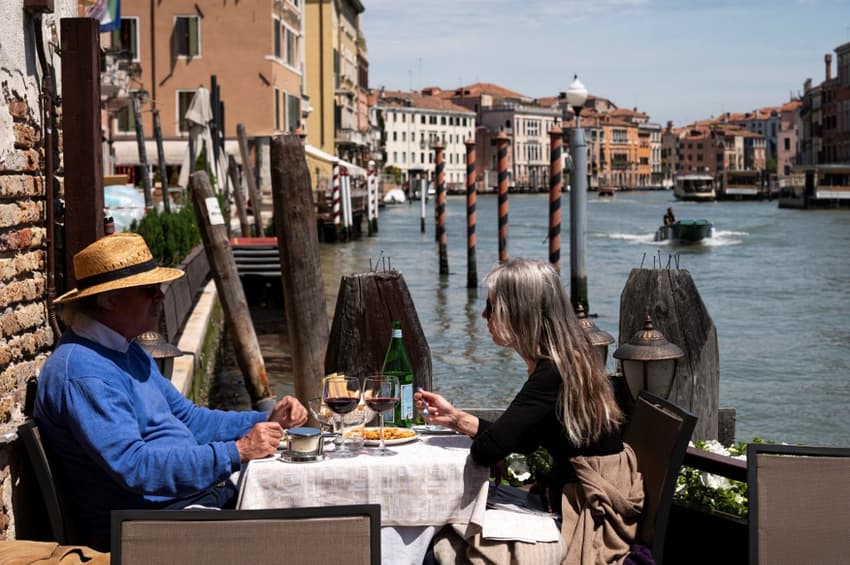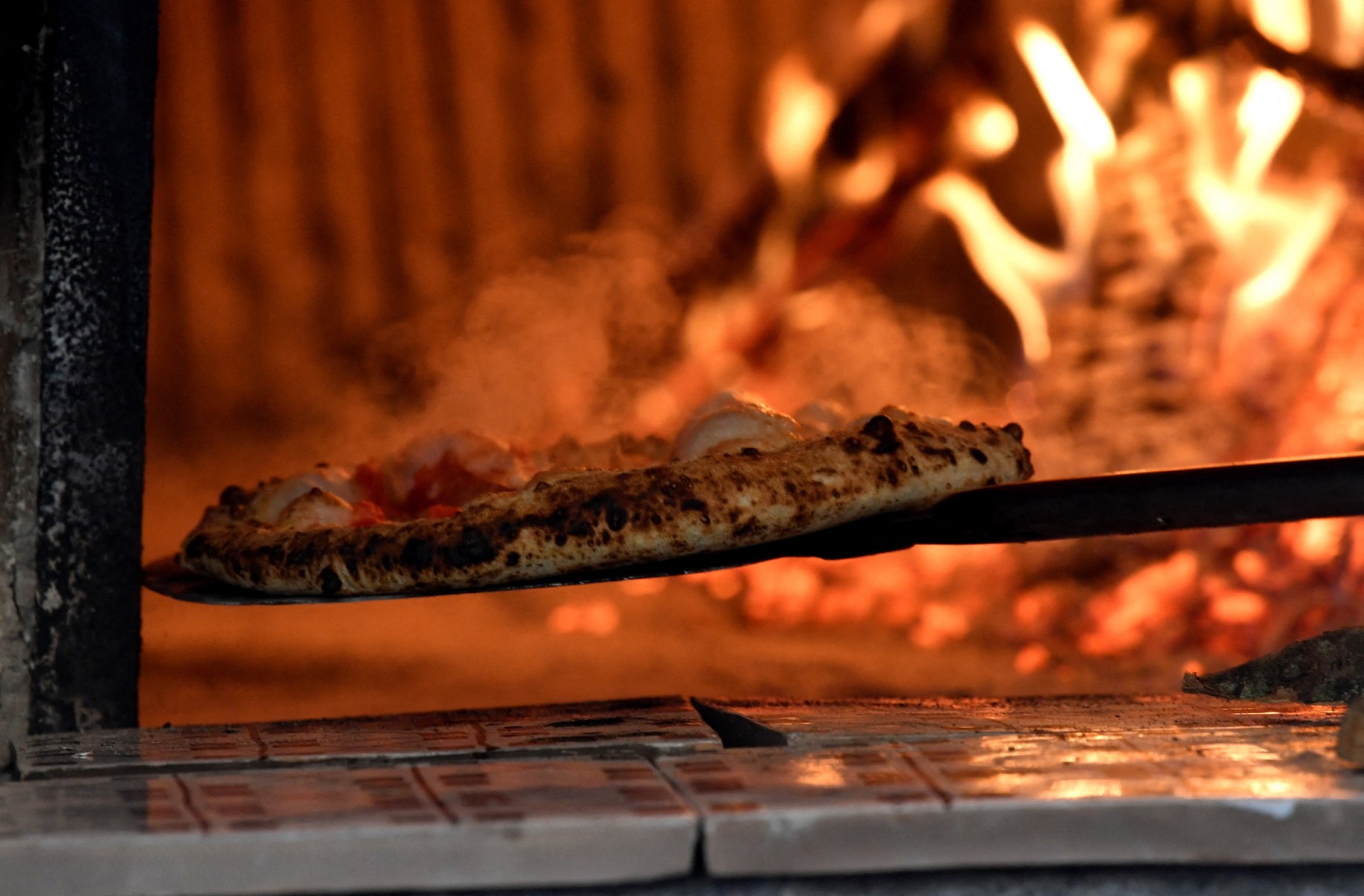Trattoria to osteria: Explaining the different restaurants in Italy

Dining out in Italy is arguably the best way to explore the country's famed cuisine, but choosing between 'ristorante', 'trattoria' and 'osteria' can be hard or even daunting without some basic knowledge of exactly what you can expect from each one of them.
Dining out is one of the best ways to explore Italy’s famed cuisine and one of the experiences tourists most look forward to when visiting the country.
But, picking the right spot for a romantic dinner or a Sunday family lunch can be hard or even intimidating without some basic knowledge of all the different kinds of Italian restaurants available in the country.
After all, while many are familiar with what a pizzeria is, what’s the difference between a trattoria and an osteria? And what's an agriturismo?
Though the precise distinction between all types of restaurants isn't always clear to Italians either, each establishment has some unique features. Knowing this will help you make the best choice for the occasion at hand.
Ristorante
An Italian ristorante is the most formal (and most expensive) kind of eating establishment in Italy.
Some may be cosy and small, while others may offer a fancier atmosphere and stylish furnishings.
Regardless of venue-specific features, you can generally expect to receive a printed menu with a large selection of dishes (starters, first and second courses, sides and desserts) and wines, including some very fine Italian or foreign bottles.
You can also expect first-rate table service.
Trattoria
A trattoria is less formal than a restaurant but still has good decor and a welcoming ambience.
You can expect a cosy, homely atmosphere, unpretentious regional dishes made with local ingredients, and a good selection of Italian wines. Service will in most cases be a simple, ‘no-frills’ business.
READ ALSO: Italy's historic trattorias need support before they are lost forever
Prices here are more affordable than in restaurants but slightly more expensive than in osterie (see below).

A typical Italian 'trattoria' in Rome. Photo by Stefano Vigorelli via Unsplash
A trattoria is also a family-run establishment in most cases.
Osteria
Osterie were originally inns offering sleeping quarters and homemade meals to travellers.
The modern osteria is no longer an inn but has preserved most of its original features, including modest decor, a humble atmosphere and low prices.
The focus is all on local wine, unassuming traditional food, and good company.
In a typical osteria, you may not get a printed menu: the menu of the day will be written on a chalkboard on the wall, or a number of choices will simply be listed by the waiter.
Agriturismo
An agriturismo is a modest countryside establishment generally run by working farmers offering accommodation and board.
Staying at an agriturismo is arguably the best way to experience Italian rural life firsthand, including at mealtime.
READ ALSO: Dressing up and slowing down: The unwritten rules of an Italian Sunday lunch
Meal ingredients will often be products of the farm itself, whether that be cheese, olive oil, vegetables, eggs, chicken or beef, and dishes will largely follow the recipes of the rural culinary tradition.
Prices are generally very affordable.
Pizzeria
A pizzeria is a restaurant serving pizza made by a pizzaiolo (‘pizza maker’), who usually works with a wood-burning oven. It can range from informal to fancy, and prices largely vary depending on the establishment and its location.

A pizza being cooked in the wood oven of a 'pizzeria' in Naples. Photo by TIZIANA FABI / AFP
Though traditional pizzerie tend to only serve pizza, nowadays many establishments will pair a selection of pizza dishes with a menu of appetisers, first and second courses, and desserts.
Other establishments
Tavola calda: Literally meaning ‘hot table’, a tavola calda is a small business selling pre-prepared food from behind a counter. It usually has a few small tables available which are ideal for those looking to have a quick meal on a busy day.
In most cases, you’ll be able to choose from a fairly large selection of dishes ranging from pasta and rice to meat and vegetables.
Rosticceria: A rosticceria is a small business offering a large selection of roasted meat dishes (grilled chicken, skewers, meat rolls, etc.) along with some pre-prepared sides.
Orders are taken from behind a counter and diners can eat at one of the small tables available or take their food home.
Paninoteca: As suggested by the name, a paninoteca offers a selection of sandwiches, which are generally served from behind a counter. It’s a very informal place with a few small tables which are perfect for a meal ‘on the go’.
Comments (1)
See Also
Dining out is one of the best ways to explore Italy’s famed cuisine and one of the experiences tourists most look forward to when visiting the country.
But, picking the right spot for a romantic dinner or a Sunday family lunch can be hard or even intimidating without some basic knowledge of all the different kinds of Italian restaurants available in the country.
After all, while many are familiar with what a pizzeria is, what’s the difference between a trattoria and an osteria? And what's an agriturismo?
Though the precise distinction between all types of restaurants isn't always clear to Italians either, each establishment has some unique features. Knowing this will help you make the best choice for the occasion at hand.
Ristorante
An Italian ristorante is the most formal (and most expensive) kind of eating establishment in Italy.
Some may be cosy and small, while others may offer a fancier atmosphere and stylish furnishings.
Regardless of venue-specific features, you can generally expect to receive a printed menu with a large selection of dishes (starters, first and second courses, sides and desserts) and wines, including some very fine Italian or foreign bottles.
You can also expect first-rate table service.
Trattoria
A trattoria is less formal than a restaurant but still has good decor and a welcoming ambience.
You can expect a cosy, homely atmosphere, unpretentious regional dishes made with local ingredients, and a good selection of Italian wines. Service will in most cases be a simple, ‘no-frills’ business.
READ ALSO: Italy's historic trattorias need support before they are lost forever
Prices here are more affordable than in restaurants but slightly more expensive than in osterie (see below).

A trattoria is also a family-run establishment in most cases.
Osteria
Osterie were originally inns offering sleeping quarters and homemade meals to travellers.
The modern osteria is no longer an inn but has preserved most of its original features, including modest decor, a humble atmosphere and low prices.
The focus is all on local wine, unassuming traditional food, and good company.
In a typical osteria, you may not get a printed menu: the menu of the day will be written on a chalkboard on the wall, or a number of choices will simply be listed by the waiter.
Agriturismo
An agriturismo is a modest countryside establishment generally run by working farmers offering accommodation and board.
Staying at an agriturismo is arguably the best way to experience Italian rural life firsthand, including at mealtime.
READ ALSO: Dressing up and slowing down: The unwritten rules of an Italian Sunday lunch
Meal ingredients will often be products of the farm itself, whether that be cheese, olive oil, vegetables, eggs, chicken or beef, and dishes will largely follow the recipes of the rural culinary tradition.
Prices are generally very affordable.
Pizzeria
A pizzeria is a restaurant serving pizza made by a pizzaiolo (‘pizza maker’), who usually works with a wood-burning oven. It can range from informal to fancy, and prices largely vary depending on the establishment and its location.

Though traditional pizzerie tend to only serve pizza, nowadays many establishments will pair a selection of pizza dishes with a menu of appetisers, first and second courses, and desserts.
Other establishments
Tavola calda: Literally meaning ‘hot table’, a tavola calda is a small business selling pre-prepared food from behind a counter. It usually has a few small tables available which are ideal for those looking to have a quick meal on a busy day.
In most cases, you’ll be able to choose from a fairly large selection of dishes ranging from pasta and rice to meat and vegetables.
Rosticceria: A rosticceria is a small business offering a large selection of roasted meat dishes (grilled chicken, skewers, meat rolls, etc.) along with some pre-prepared sides.
Orders are taken from behind a counter and diners can eat at one of the small tables available or take their food home.
Paninoteca: As suggested by the name, a paninoteca offers a selection of sandwiches, which are generally served from behind a counter. It’s a very informal place with a few small tables which are perfect for a meal ‘on the go’.
Join the conversation in our comments section below. Share your own views and experience and if you have a question or suggestion for our journalists then email us at [email protected].
Please keep comments civil, constructive and on topic – and make sure to read our terms of use before getting involved.
Please log in here to leave a comment.